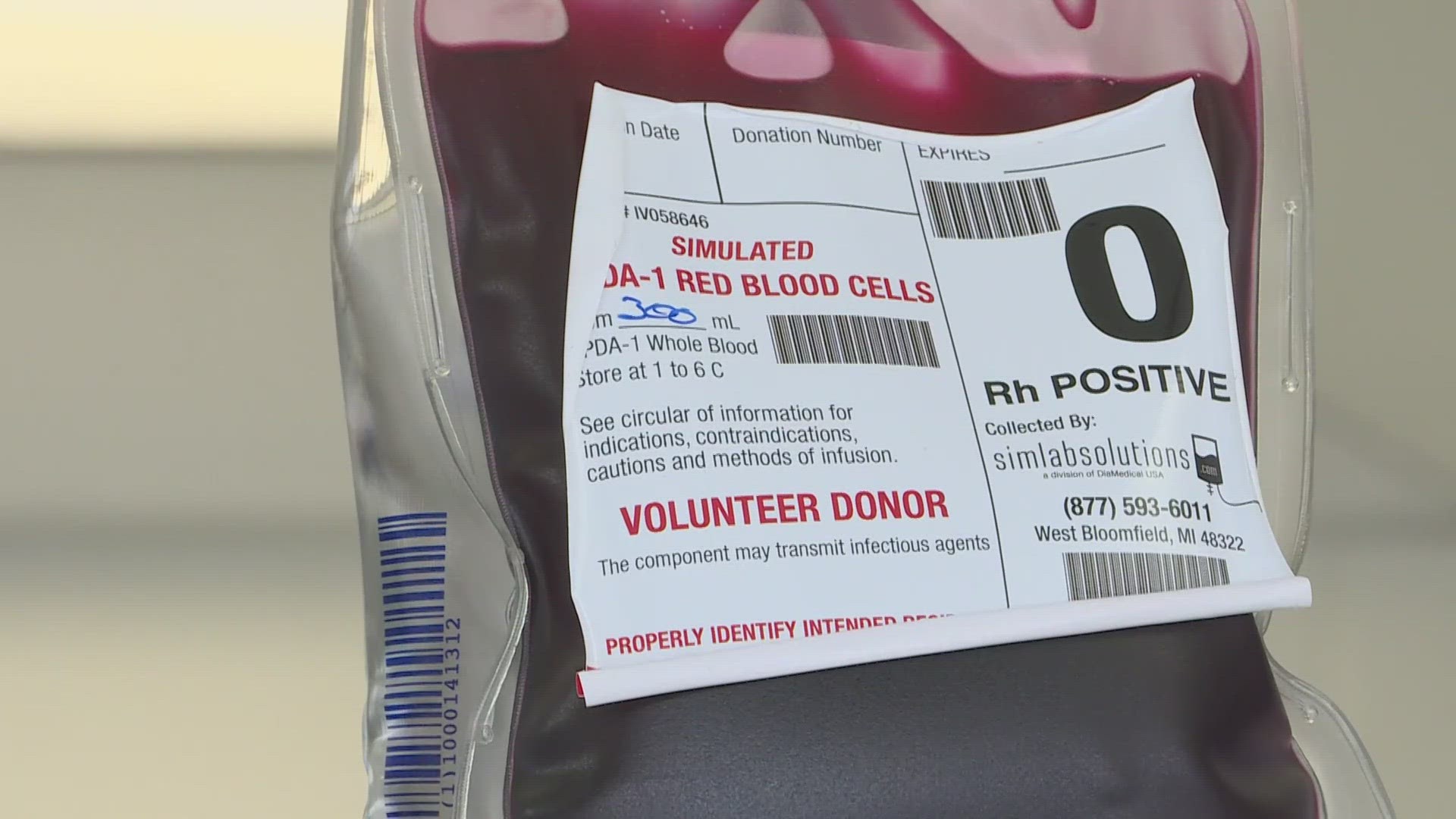WASHINGTON — When paramedics receive a trauma patient, seconds can mean life or death. That's why DC Fire and EMS are adding blood bags to their life-saving toolkit.
“Your outcome when you are bleeding is often determined by traffic and congestion," DC Fire and EMS Assistant Medical Director Dr. David Vitberg said. "And you can hemorrhage to death in minutes.”
Right now, patients have to wait until they reach the hospital for blood transfusions, while paramedics work to stem any bleeding with compression, packing the wound, and tourniquets.
“[But] when blood is coming out, we need to put blood back in," Vitberg said.
So, starting in mid-February, in a partnership with The George Washington University Hospital blood bank and the American Red Cross, they'll start putting blood back in patients inside D.C. ambulances.
Vitberg said they've been observing other systems across the country to see if this step actually improves patient outcomes -- and they discovered it does.
One of the main studies they're basing D.C.'s program on is New Orleans'.
"They just published data that shows that when they transfuse blood to patients suffering from hemorrhagic shock, and they give other ancillary medications like calcium and a medication called TXA, which can help stop hemorrhage, that their mortality rate, their death rate at 24 hours, and in all causes, goes way, way, way down. And so they're saving lives," Vitberg said.
He said D.C. took a look at trauma patients in the first six months of 2023 to determine how many could have benefited from these in-transit transfusions, and came up with about 200.
In one year, therefore, they estimate they could help upwards of 400 people with this new tool.
“What we're doing with whole blood is bringing this very time sensitive therapy to the patient's side with the expectation that we're going to save lives by initiating blood transfusion where we find the patient and not waiting for them to get to the hospital," Vitberg said.
Whole blood refers to the blood taken as is from a donor (after it's tested for certain diseases and antibodies) as opposed to what a hospital often distills for platelets, plasma, etc.
All of the blood they receive from blood banks will be type O, since O- is the universal donor and O+ works for a majority of people. Vitberg said in a crisis, they don't have time to test a patient's blood for a perfect match.
To start, he said they will have 30 to 35 people, mostly supervisors, trained on these in-transit transfusions who will transport the blood in one of the EMS SUV's to scenes. He said they'll be stationed in areas that typically get the most trauma calls, but they'll be able to deploy to any area of the city.
The team even developed a backpack specific for all the supplies needed for these transfusions.
Also important is keeping the blood at the correct temperature throughout transport -- between 1.5 to 5.5 degrees Celsius.
"We can very accurately track the temperature of each unit of blood, which is stored in a cooler, something called a credo cooler. We actually have temperature sensors in those coolers that every 30 seconds broadcast temperature data from that compartment," Vitberg said, showing off a computer system that displays all of this cooler data.
He said they also have a second layer of protection in a sticker on the blood bag that shows whether or not the blood has been in the correct temperature range throughout its journey.
Amid this new initiative, the U.S. is facing a critical blood shortage.
“Usually you want to see, you know, five days worth of blood on the shelves," Executive Director of the DC Area Red Cross, Erwin Stierle said. "And it's at the point where it's about a day or less.”
He said a huge part of the supply problem has been people not returning to work since the pandemic -- where companies would often hold easily accessible blood drives. So, they've been working with community partners to try to increase donations.
When asked if this new DC EMS program is even feasible with the shortage, Stierle said it is so long as the supply is meticulously managed.
"This is kind of another emergency need that has emerged, where again, we decided there has to be something done, there has to be something done to save lives, because we're looking at upwards of 400 people a year who might potentially be saved because of this," he said.
He said unfortunately, blood can't be manufactured, so they really need people to roll up their sleeves and donate.
“At the end of the day, we have to replace the blood that you've lost," Vitberg said. "So bringing this this really battle tested therapy to …the frontlines to the point where people are injured, outcomes improve.”

